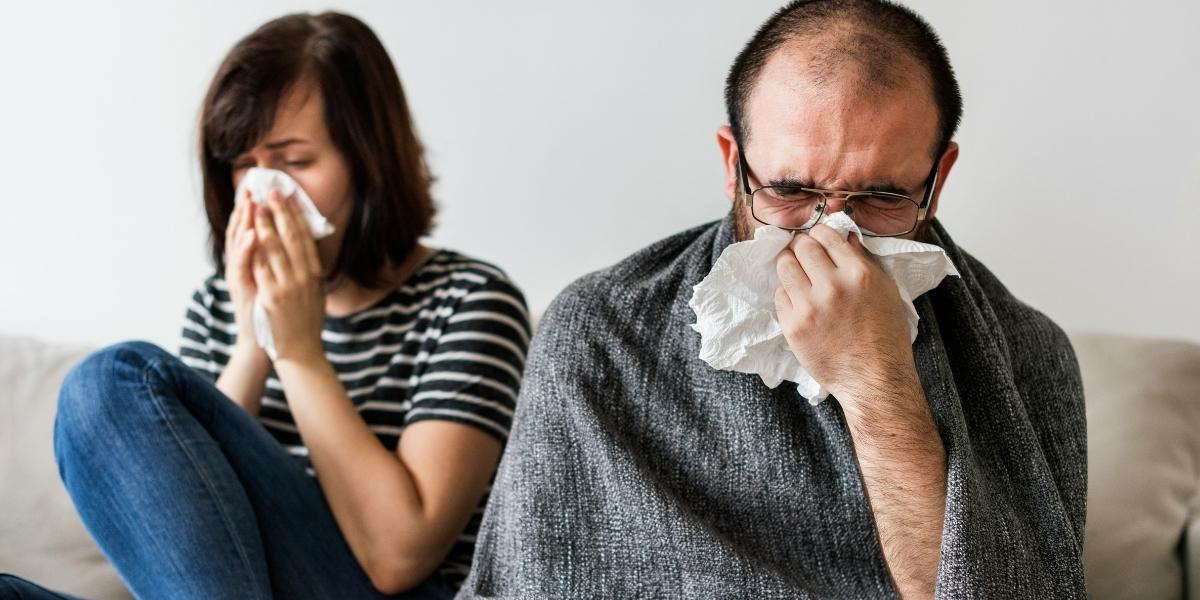Discovering you have an allergy can be a bit like solving a mystery. Suddenly, certain sneezes, rashes, or stomach upsets start to make sense. Allergies occur when your immune system overreacts to a harmless substance, identifying it as a threat and launching a defensive attack. This immune response releases chemicals, like histamine, which then cause a range of symptoms. For someone new to the world of allergies, figuring out what is causing these reactions can feel overwhelming, but with careful observation and a systematic approach, it is possible to begin identifying potential triggers. This guide will help you understand common allergy signs, explore how to track potential culprits, and explain when to seek professional help.
Read Also: How to Keep Your Makeup Routine Clean and Healthy
What Are the Common Signs and Symptoms of Allergies?
Allergy symptoms can vary widely in type and severity, depending on the allergen and how your body encounters it. Recognizing these common signs is the first step in identifying a potential allergy. If you inhale allergens, such as pollen, dust mites, or pet dander, symptoms often manifest in the respiratory system. You might experience persistent sneezing, a runny or stuffy nose, itchy eyes that water, or a scratchy throat. Some individuals might also develop a cough or wheezing, a whistling sound when breathing, which could indicate allergic asthma. These symptoms might resemble a common cold, but unlike a cold, they typically do not involve a fever and tend to persist as long as you are exposed to the allergen.
When allergens come into contact with the skin, reactions can include rashes, hives, or generalized itching. Hives are raised, red, itchy welts that can appear anywhere on the body. Contact dermatitis, another type of skin allergy, results from direct skin contact with an allergen, leading to redness, swelling, blistering, and intense itching. Common triggers for contact dermatitis include certain metals like nickel, latex, fragrances, or specific chemicals in cosmetics. For food allergies, symptoms often involve the digestive system and can appear quickly, sometimes within minutes, or occasionally hours after eating the offending food. These can include stomach cramps, nausea, vomiting, or diarrhea. Food allergies can also cause hives, swelling of the lips, tongue, or face, and in more severe cases, difficulty breathing. Identifying these specific patterns of symptoms is crucial for narrowing down the possible allergic triggers.
How Can You Start Identifying Potential Allergens at Home?

Photo Credit: Unsplash.com
Identifying potential allergens at home involves becoming a careful observer and keeping a detailed record. Begin by noting when and where your symptoms occur. Do they appear only at certain times of the year, suggesting seasonal allergies like pollen? Or do they happen year-round, which might point to indoor allergens such as dust mites, pet dander, or mold? Pay attention to specific situations. Do you sneeze more when you are cleaning, or after spending time around a pet? Does a certain food always cause digestive upset or skin reactions? Keeping a journal of your symptoms, including what you were doing, where you were, and what you ate immediately before the reaction, can reveal important patterns.
If you suspect indoor allergens, consider common culprits. Dust mites thrive in warm, humid environments, especially in bedding, carpets, and upholstered furniture. Regular cleaning, using allergen-proof covers on mattresses and pillows, and maintaining lower indoor humidity can help manage dust mite exposure. Pet dander, tiny flakes of skin shed by animals, can linger in the air and on surfaces even if the pet is not present. If you suspect a pet allergy, observe if symptoms lessen when you are away from animals. Mold can grow in damp areas like bathrooms, basements, or around leaky pipes; identifying and cleaning moldy areas can reduce exposure. For potential food allergies, an elimination diet, conducted carefully and preferably under professional guidance, might be useful. This involves removing suspected foods from your diet for a period, then reintroducing them one by one to see if symptoms return. This systematic approach can help pinpoint triggers before seeking professional testing.
When Should You Consider Seeking Professional Medical Advice?
While at-home observation can provide valuable clues, seeking professional medical advice is essential for an accurate diagnosis and effective management plan. If your symptoms are persistent, severe, or significantly impact your quality of life, it is time to consult a doctor. This includes chronic congestion, recurring skin rashes, or frequent digestive issues that do not resolve with general remedies. A doctor can help determine if your symptoms are indeed caused by allergies or if they point to another underlying condition. They will take a detailed medical history, asking about your symptoms, family history of allergies, and any patterns you have observed.
Certain allergy symptoms warrant immediate medical attention. If you experience difficulty breathing, swelling of the face, lips, or tongue, widespread hives, dizziness, or a sudden drop in blood pressure, these could be signs of a severe allergic reaction called anaphylaxis. Anaphylaxis is a life-threatening emergency and requires immediate medical intervention, often involving epinephrine. Even if an initial reaction seems mild, any symptom that suggests airway constriction or systemic involvement should prompt an emergency visit. A healthcare professional can provide guidance on emergency action plans and prescribe an epinephrine auto-injector if needed.
How Do Doctors Diagnose Allergies Through Testing?
Once you consult a healthcare provider, they might recommend specific allergy tests to confirm sensitivities to particular substances. The most common diagnostic methods are skin prick tests and blood tests. A skin prick test, also known as a scratch or puncture test, involves placing a small amount of allergen extract on your skin, typically on the forearm or back, and then lightly pricking the surface of the skin. If you are allergic to a substance, a small, itchy, red bump (a wheal) will usually appear within 15 to 20 minutes, similar to a mosquito bite. This test is generally quick and can test for reactions to many different allergens at once, including pollen, mold, dust mites, pet dander, and various foods.

Photo Credit: Unsplash.com
Blood tests, specifically IgE antibody tests, measure the amount of specific antibodies your immune system produces in response to allergens. When your body encounters an allergen, it produces immunoglobulin E (IgE) antibodies to fight it off. Higher levels of specific IgE antibodies in your blood can indicate an allergy to a particular substance. Blood tests are particularly useful when skin tests are not feasible, such as for individuals with severe skin conditions like eczema, or for those taking medications that might interfere with skin test results, like antihistamines. While these tests can indicate a sensitivity, a positive test result does not always mean you will experience a reaction. The results are interpreted alongside your medical history and symptoms to provide an accurate diagnosis. In some cases, particularly for food or drug allergies, an oral food challenge, performed under strict medical supervision, might be conducted to confirm a diagnosis. This involves consuming small, increasing amounts of a suspected allergen to observe for a reaction, ensuring safety in a controlled environment.
What Steps Follow After Identifying Your Allergies?
Once your allergies are identified, your healthcare provider will work with you to develop a management plan. The primary strategy for managing allergies is usually avoidance of the identified triggers. For environmental allergies, this might involve lifestyle adjustments like keeping windows closed during high pollen counts, using air purifiers with HEPA filters, or regularly cleaning your home to reduce dust mites. For food allergies, it means meticulously reading food labels and avoiding contact with the allergenic food. For pet allergies, it might involve limiting exposure or taking steps to reduce dander in the home.
Read Also: Understanding Preservatives for Food Safety
Medications can also play a significant role in managing symptoms. Over-the-counter or prescription antihistamines can help reduce sneezing, itching, and runny nose. Decongestants can alleviate nasal stuffiness. Nasal corticosteroids are often prescribed for persistent nasal allergy symptoms. For some individuals with severe or persistent allergies that do not respond well to avoidance or medication, allergen immunotherapy, commonly known as allergy shots, might be an option. This treatment involves a series of injections containing small, increasing doses of the allergen, helping the immune system build tolerance over time. With a clear understanding of your triggers and a tailored management plan, living with allergies becomes much more manageable, allowing you to lead a more comfortable and active life.








